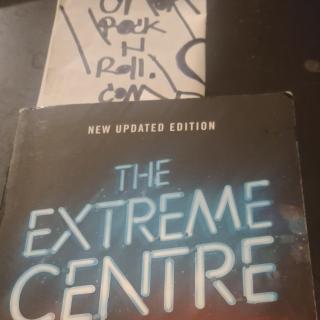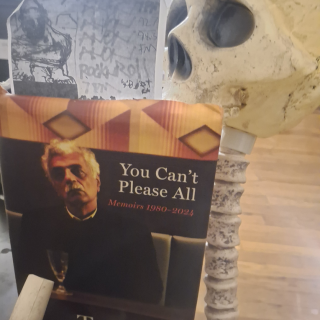My students often say to me that they aren’t clear what they should be highlighting when they are reading their texts or primary source documents. I had a similar thought when I was reading A More Beautiful and Terrible History; I wanted to underline just about everything. What a terrific book!
As a professor of African American history, I know my students are woefully ignorant of the story of race in America. They usually know about Rosa Parks, Martin Luther King’s 1963 speech at the March on Washington, Malcolm X’s “by-any-means-necessary approach to ridding America of racism. But even with those subjects, they often get details wrong and miss the nuances. And they are absolutely gobsmacked to learn that white people fought and died alongside blacks for freedom.
Theoharis’ thesis is that in teaching, discussing, writing about, and analyzing the so-called civil rights movement, almost everybody gets it wrong. The proof of her assertion can be seen in 2011 nationwide study by the Southern Poverty Law Center (SPLC). The Center surveyed public schools in America and found the teaching of civil rights history “woefully inadequate.” The study was conducted again in 2014, and there was very little improvement shown. Twenty of the fifty states in America scored an F. Public schools in Alaska, Maine, Wyoming, and Oregon do not teach the movement, nor require it to be taught. Seventeen states improved one letter grade since the 2011 study. Which states got A’s? Georgia, Louisiana, and South Carolina.
The results of the studies say several things. First, in the nationwide wrangling over what students should know about American history, those who shape policy are leaving out a crucial component. Second, the subject is almost never a required course, so unless students have an interest in some aspect of African American history or culture—more than ninety percent of the students in my African American history classes are black students—they won’t learn much of anything about black Americans at all. (Like the clothing made by FUBU, which is the acronym For Us, By Us, studying and teaching black history is a job for African Americans only.) Third, if the subject is studied, its focus is confined to one region of the country where white supremacy, Jim Crow, and many of the worst racial atrocities mainly occurred—the south. Southern officials who complained that the south was made the whipping boy for all that was wrong with race in America were right.
In A More Beautiful and Terrible History—the phrase borrows from a quote by the writer James Baldwin—Theoharis says our current methods of remembering and teaching this area of history ignore the decades-long efforts of people who had toiled in freedom work; inaccurately portrays the country’s long march toward racial equality; and treats racism as the province solely of white southerners. The selective memory of racism in the country has allowed millions of people to claim the work of the freedom movement so successful, it is no longer needed. Nowhere is this more apparent than in the election of Barack Obama.
With the precision of a brain surgeon’s scalpel but the impact of a sledge hammer, Theoharis busts myth after myth of the modern-day freedom movement. She, of course, looks at its two titans, Rosa Parks and Martin Luther King, Jr., but she reminds us that the former had long been involved in race work, and the latter grew increasingly radical until is death, in part spurred on by his wife, Coretta Scott King.
Theoharis is especially tough on the subject of racism outside the south. While northern racism generally did not show us the wonderful, terrible pictures we’ve seen of its southern counterpart, it was every bit as real, damaging, and purposeful. Hers is a searing indictment of that segregation, and the dog whistles used to keep it from looking like what it is: forced busing, neighborhood schools, colorblindness, property rights, and paeons to law and order. Theoharis refers to this as “polite racism.” These words were designed to make whites outside the south appear to be tolerant and sympathetic to the movement. They are not the cigar chomping, overweight southern sheriffs who set dogs and water hoses on well behaved black protestors. They are quick to condemn the Ku Klux Klan and its mission. Outside the south, African Americans could attend schools, patronize public accommodations, and vote without fear of being harassed, beaten, or killed. Surely northerners could not possibly be prejudiced!
She is especially critical of the manner in which we mark the anniversaries of seismic civil rights events. The soaring rhetoric of politicians, Democrats and Republicans, treat these events as relics of a time long past. Speakers at these events—including former President Barack Obama—weave a tale of struggle, enlightenment, and victory. The very act of celebrating them is proof that we have kept faith with the Founding Fathers and made America the democratic society she is. (Some of those men would be appalled at how democratic America is now. They invented republicanism, not democracy.) But current day events show us that this could not possibly be true.
As someone who teaches African American history, I know the difficulty of trying to pack so much information into so little time. This is further exacerbated by the fact that I am a social historian; that is, I teach the history and lives of the masses. I am daunted by the task every day. I question myself constantly when preparing for class, teaching class, and afterward. Did I spend too much time on one thing and not enough on another? Did I teach about racism and segregation outside the south? Did I give unsung heroes such as Septima Clark and Amzie Moore their due? Did I give too much credit to so called liberals who impeded the freedom movement just as much as George Wallace? Did I emphasize enough how women and young people were the boots on the ground that forced America to live up to its promise?
The historian David Blight said “remembering is in some ways about forgetting.” A More Beautiful and Terrible History is a scathing indictment of how we remember and teach civil rights history, and how damaging this has been to American society. In her robust retelling of the nation’s history on race, Theoharis seeks to set us on a path to correct this, and asks all Americans to become willing to grapple with the muck and mire of the real American story.
I hope that is what I am doing.



